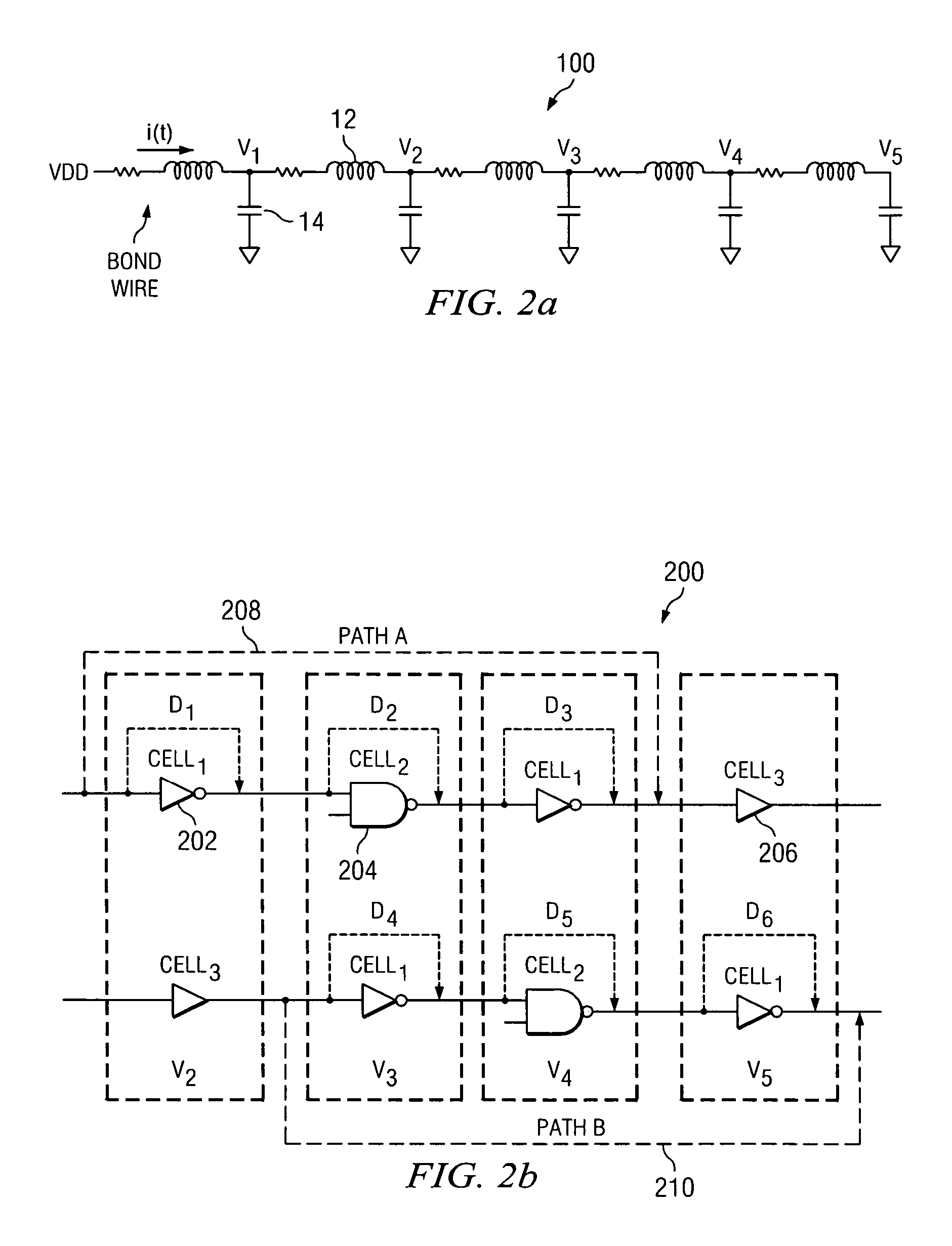Timing closure for system on a chip using voltage drop based standard delay formats
a timing analysis and voltage drop technology, applied in the field of timing analysis techniques, can solve the problems of increasing test time, affecting the timing of system on the chip, so as to achieve less pessimistic timing analysis and less on the margins
- Summary
- Abstract
- Description
- Claims
- Application Information
AI Technical Summary
Problems solved by technology
Method used
Image
Examples
Embodiment Construction
[0019]FIG. 1 is a schematic diagram illustrating a typical power grid model 10 to determine timing closure for SoCs using voltage drop based SDFs; while FIGS. 2a and 2b depict schematic diagrams illustrating one embodiment of an on chip power grid 100 and one embodiment for three different cells instantiated multiple times 200. Assuming that inductors 12 are shorted and that capacitors 14 are open, the power grid 10, 100 can of course, be modeled as resistors only. Such a resistive model implies that voltage drop=IR (under static conditions), and is generally computed based on average current. Comprehending inductance as other than a short implies that voltage drop=i(t)R (static)+Ldi / dt (dynamic). The particular model employed depends upon the mode of operation as well as the frequency of operation. With continued reference now to FIG. 2a, typically VDD>V1>V2>V3>V4>V5 because of voltage drop.
[0020]Moving now to FIG. 2b, consider three different cells 202, 204, 206 (Cell1, Cell2, Cel...
PUM
 Login to View More
Login to View More Abstract
Description
Claims
Application Information
 Login to View More
Login to View More - R&D
- Intellectual Property
- Life Sciences
- Materials
- Tech Scout
- Unparalleled Data Quality
- Higher Quality Content
- 60% Fewer Hallucinations
Browse by: Latest US Patents, China's latest patents, Technical Efficacy Thesaurus, Application Domain, Technology Topic, Popular Technical Reports.
© 2025 PatSnap. All rights reserved.Legal|Privacy policy|Modern Slavery Act Transparency Statement|Sitemap|About US| Contact US: help@patsnap.com



